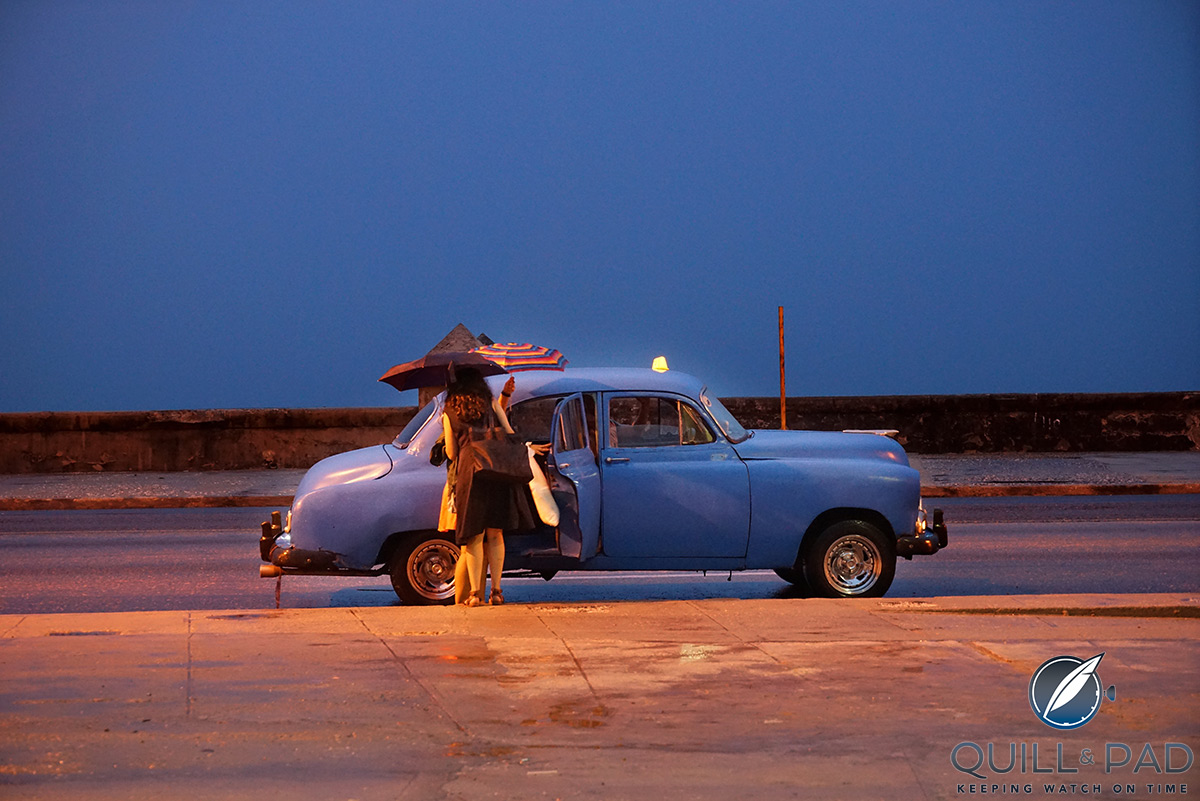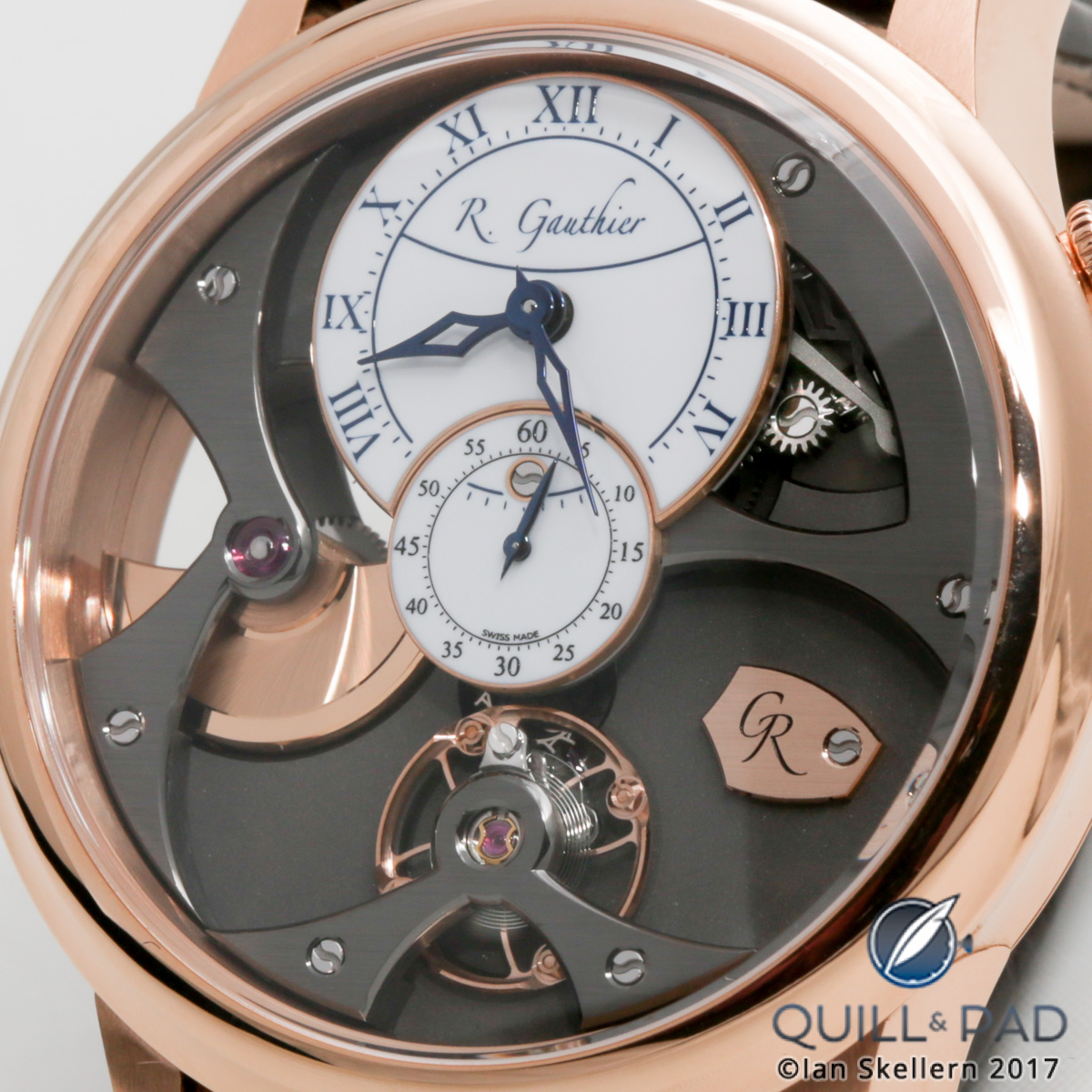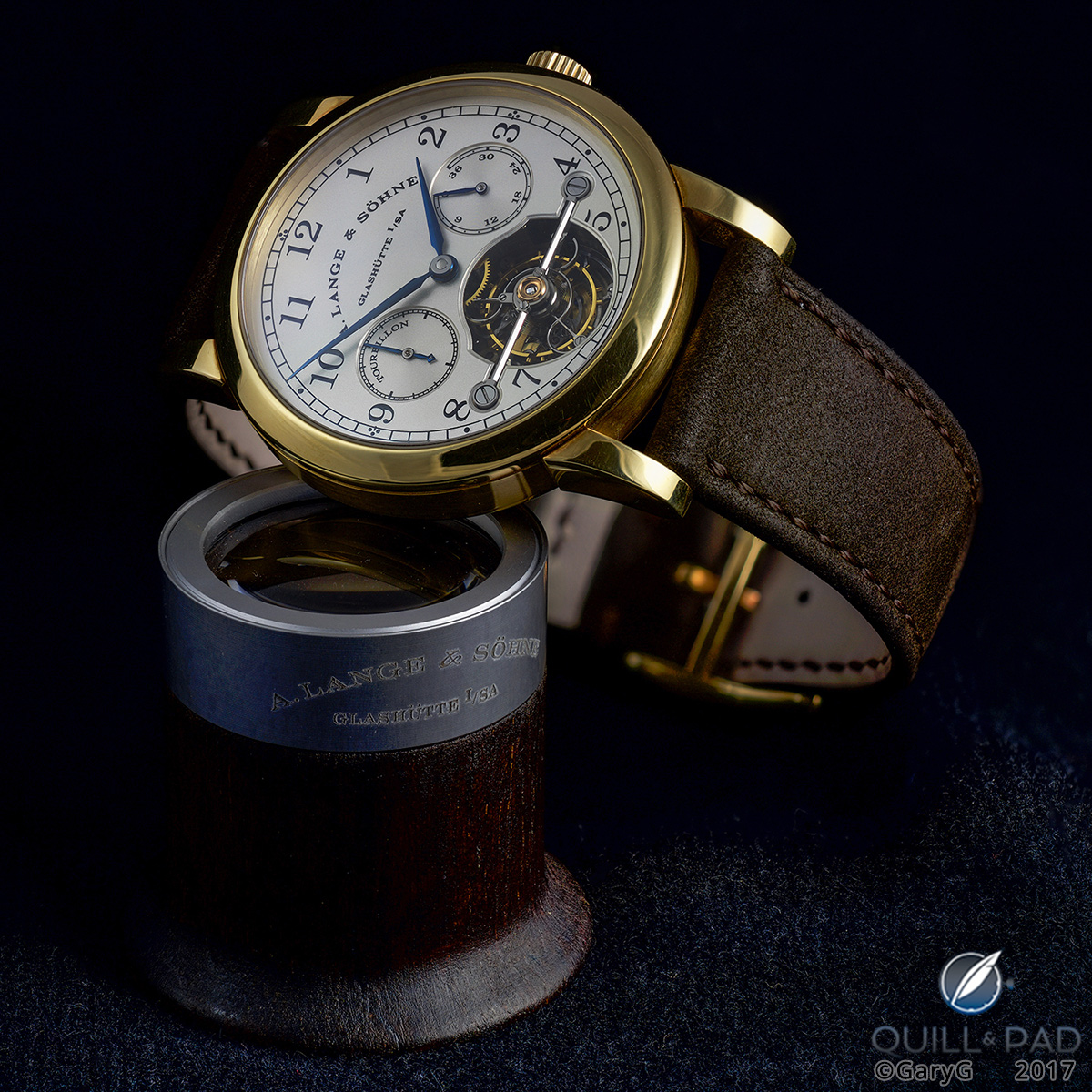
A. Lange & Söhne’s rebirth in 1990 coincided squarely with the watch world’s so-called mechanical renaissance, an era that brought traditional wristwatches into a golden age of high mechanical complications.
One of the complicated elements that experienced an incredible uptick in production as a result of the mechanical renaissance is the tourbillon, which now enjoys a popularity the likes of which was never possible in previous years of luxury watchmaking.
This is due to a few different factors: the rarity of tourbillons to that point (Abraham-Louis Breguet, the tourbillon’s inventor, only created 26 examples in his lifetime); the difficulty that watchmakers had in completing them up to the mid-1980s (the point when tourbillons were successfully added to serially produced wristwatches); and the astronomical prices that such pieces commanded, meaning that the potential customer base of such watches was severely limited.
A. Lange & Söhne’s resurrection (for the full story see The Life And Times Of A. Lange & Söhne Re-Founder Walter Lange) caused a flood of interest in both mechanical watches and German watches, particularly in German-speaking Europe. And the depth of the small collection introduced on October 24, 1994, with four models each displaying very different personalities, certainly played a part in this.
The Lange 1 remains to this day the company’s icon with its asymmetrical dial; the clean Saxonia corresponded to tidy German character; and the Arkade was primarily aimed at ladies’ wrists (and it was nice that women weren’t forgotten at a time when mechanical watches were really all about men).
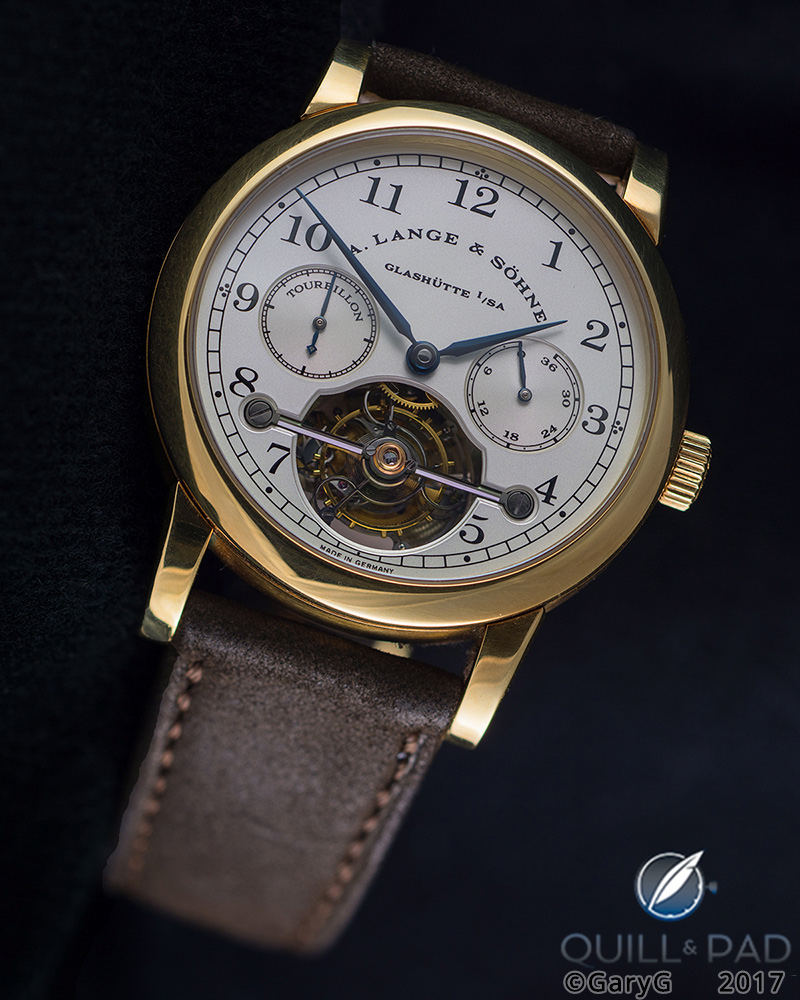
A. Lange & Söhne Pour le Mérite Tourbillon in yellow gold
A. Lange & Söhne Tourbillon Pour le Mérite
And then there was the Tourbillon Pour le Mérite. In 1994, such a complicated wristwatch was a true rarity.
And not only did the Tourbillon Pour le Mérite feature a tourbillon, but its tourbillon and escapement were fed with constant force thanks to a mechanism that had not been seen in a new watch for nearly a century: the chain and fusée, which was an integral part of all portable timepieces dating from the sixteenth and seventeenth centuries.
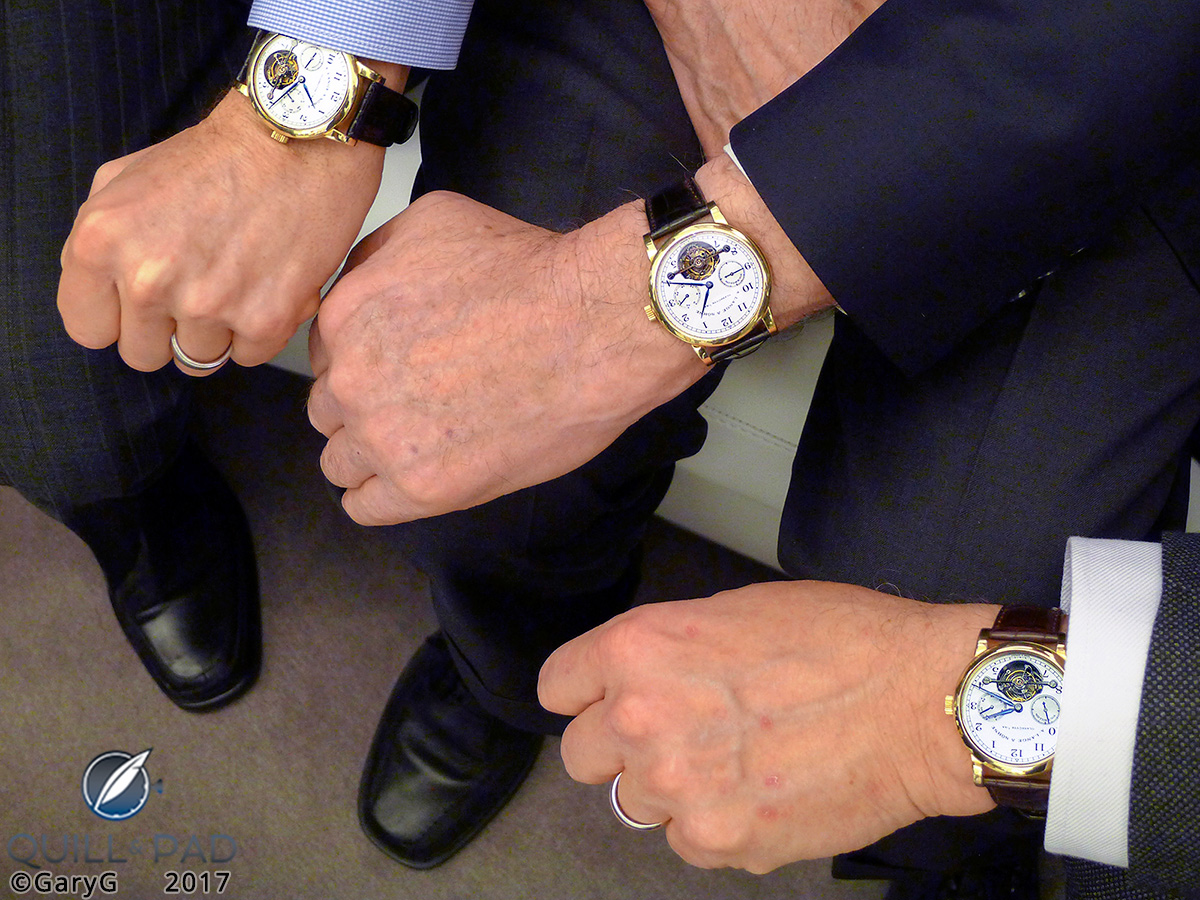
Group A. Lange & Söhne Pour le Mérite Tourbillon wristshot with Walter Lange at center, 2013
Company re-founder Walter Lange has said to me many times that upon the introduction of these four watches, the retailers present would have ordered much more than the fledgling company could have manufactured.
It was in particular the Lange 1 and the Tourbillon Pour le Mérite that piqued their interest.
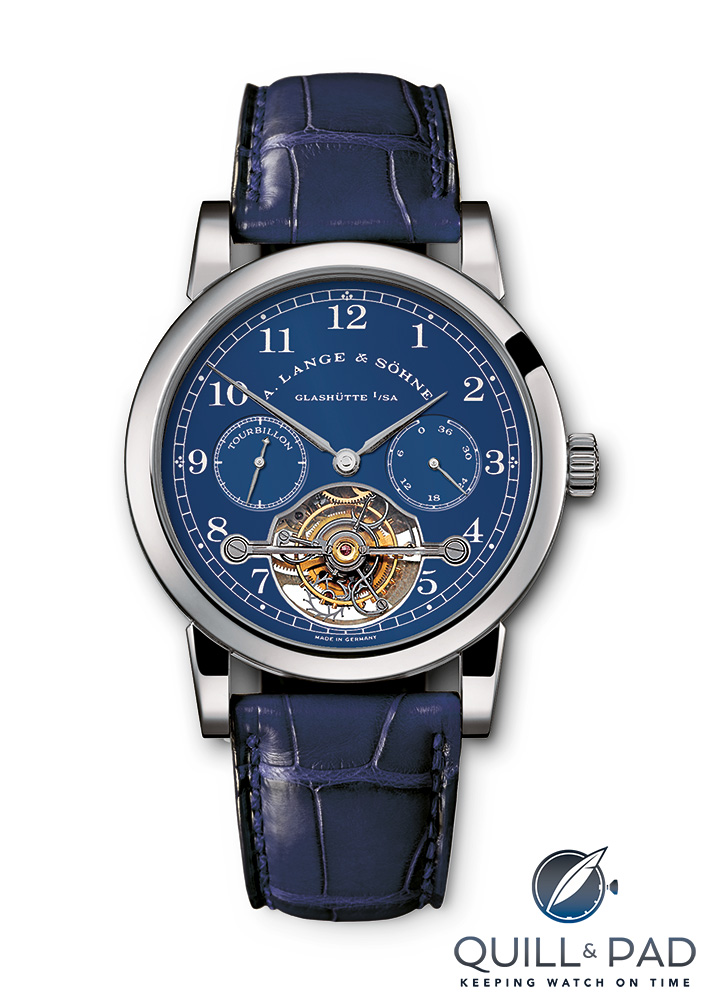
A. Lange & Söhne Tourbillon Pour le Mérite with blue dial
Limited to just 200 pieces (50 in platinum and 150 in gold) and retailing for 140,000 German marks in platinum, the Tourbillon Pour le Mérite was released in a larger limited edition number than other tourbillon models on the market to that point.
All 200 pieces were spoken for immediately according to Lange, and it took the company years to complete the orders.
By 1999, the price was being listed in Germany at 153,000 marks even though the entire edition had been manufactured and delivered by 1998 with the exception of eight pieces kept by the factory – one of which was sold at the Lange boutique in Dresden when it opened in 2010 according to Peter Chong, author of A. Lange & Söhne: The “Pour le Mérite” Collection.
Chong also maintains that the other seven pieces of the edition remain at the Glashütte factory for the time being.
And we do know that Walter Lange wore number 1.
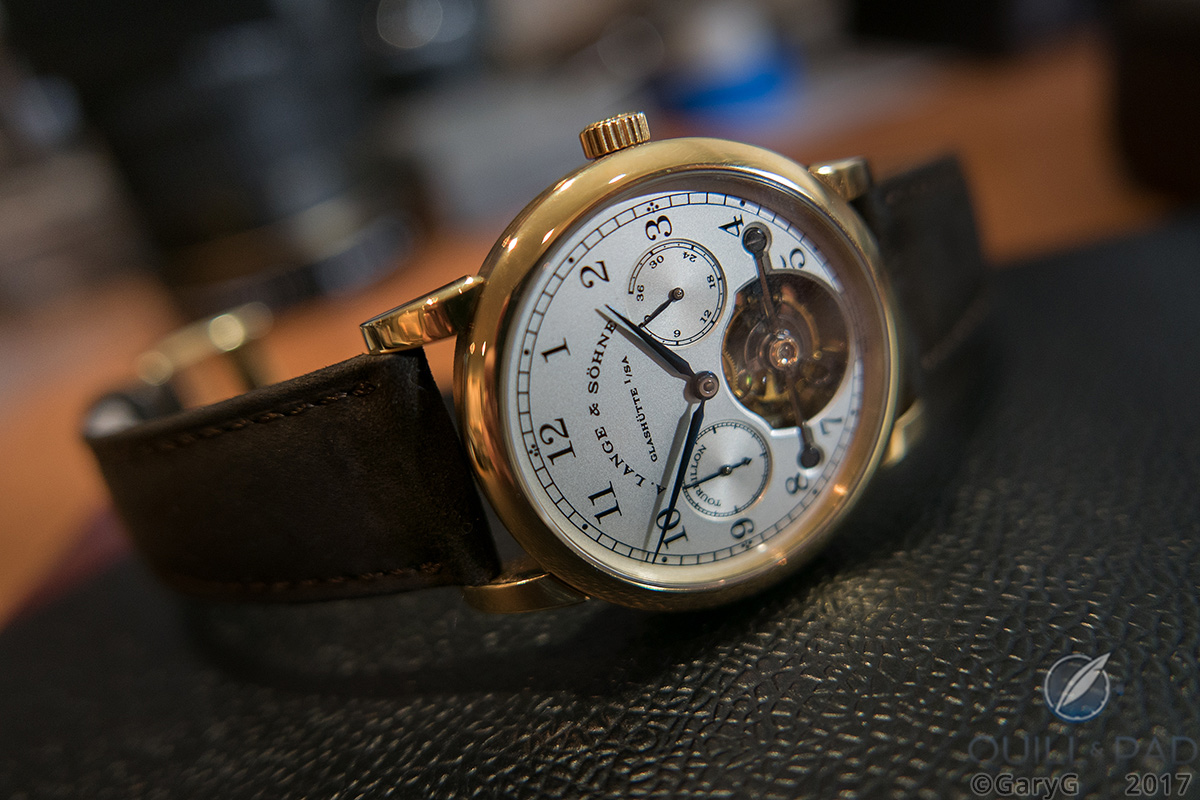
Begging to be worn: A. Lange & Söhne Pour le Mérite Tourbillon
Chain and fusée: a new milestone in modern horology
Before Germany was divided by the outcome of World War II, A. Lange & Söhne was the most prestigious timepiece maker in the country. As such, the German watchmaker had a number of high complication pocket watches in its collection.
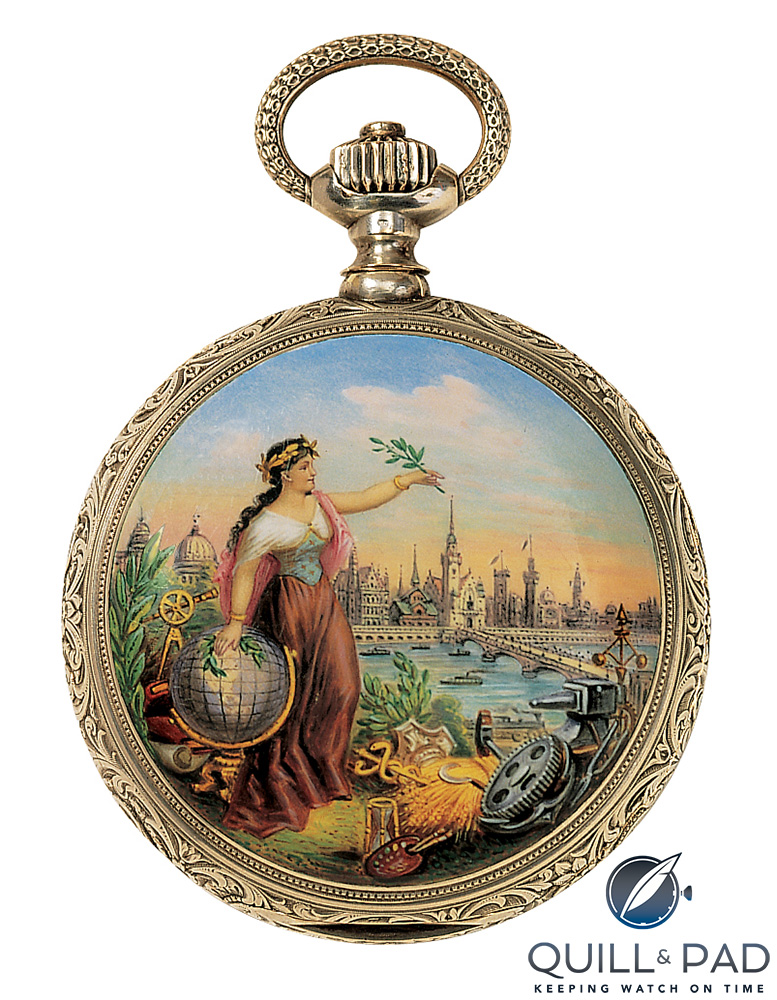
A. Lange & Söhne Jahrhunderttourbillon (“the tourbillon of the century”) pocket watch No. 41000
Martin Huber’s 1977 reference book Die Uhren von A. Lange & Söhne Glashütte Sachsen shows four pocket watches outfitted with a karussel (also known as carousel in the French-speaking world) and four with a tourbillon – one of the latter was a tourbillon pocket watch with chain and fusée and chronometer escapement that Emil Lange showed at the World’s Fair in Paris in 1900. That timepiece’s hunter case was decorated with an allegorical enamel painting of Minerva with Paris and the Seine river in the background (though Huber erroneously describes the scene as including Germania, Dresden, and the Elbe – a subject I will come back to in a different post in the future as it is a very interesting example of how history can be rewritten through factual error).
Vintage watch collectors are aware that A. Lange & Söhne timepieces containing chain and fusée mechanisms are among the most sought-after on the secondary market in central Europe, a geographical region that often determines taste in the horological world.
The gold A. Lange & Söhne tourbillon pocket watch No. 41000 mentioned above was sold to its original owner on February 28, 1900 for 1,500 German marks. In 1981 it was sold at a Habsburg auction in Geneva for 905,000 marks. Nine years later it changed hands again, this time going for 1.5 million marks. The track record speaks for itself.
It made sense for the re-founded A. Lange & Söhne to utilize a piece of its incredible history in something new to nostalgically tweak at the heartstrings of modern collectors and re-interest them in the brand.
Therefore, the modern Tourbillon Pour le Mérite was outfitted with a chain and fusée, representing the first time that a wristwatch contained this element. As we see, its use is not without precedent.
The idea for its use came directly from A. Lange & Söhne co-refounder Günter Blümlein, who, following fifty-odd years of the absence of fine watchmaking in Germany – and in particular Saxony – wanted a watch that would showcase ideas and know-how in addition to the potential of a reborn A. Lange & Söhne. The name “Pour le Mérite” comes from a Prussian order established in 1740. No member of the Lange family was ever a member of the order, though Emil Lange received knightly accolade to become a member of the French National Order of the Legion of Honor. It was also Emil who took pocket watch No. 41000 to the Parisian World’s Fair; it was the first internationally shown tourbillon from the house of A. Lange & Söhne.
It was Blümlein, who wanted to demonstrate that the re-founded brand meant business and that genuine, creative, luxurious watchmaking was returning to Saxony, who christened this watch with the historical Pour le Mérite name.
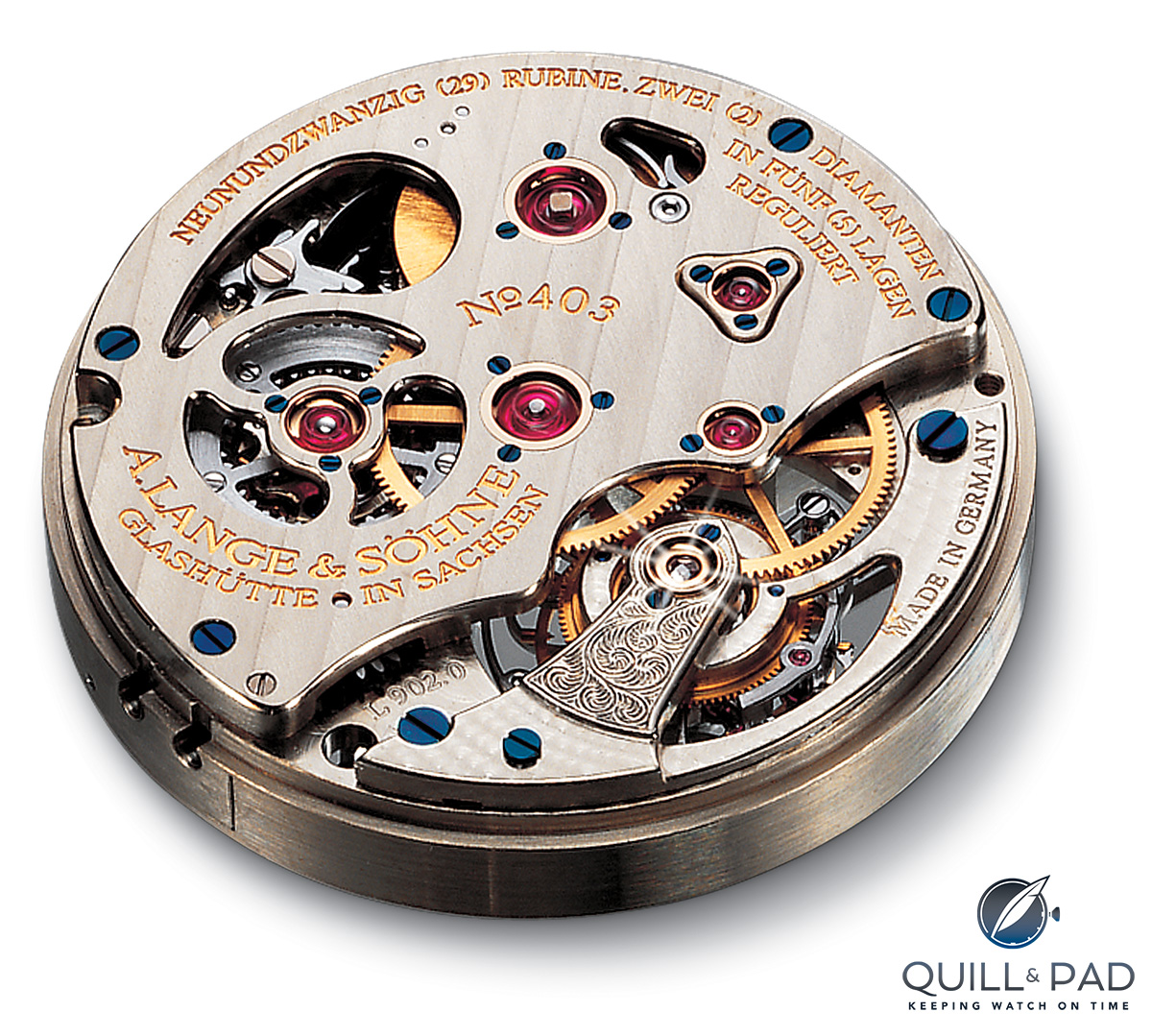
Caliber L902.0 of the A. Lange & Söhne Tourbillon Pour le Mérite
Blümlein and Walter Lange took the concept to complicated movement specialist Giulio Papi at (Audemars Piguet) Renaud et Papi, since at that time the blossoming company had neither its own workshops nor watchmakers capable of conceiving such a piece. To this day, Renaud et Papi continues to manufacture the miniscule chain with up to 636 individual components for the Pour le Mérite pieces.
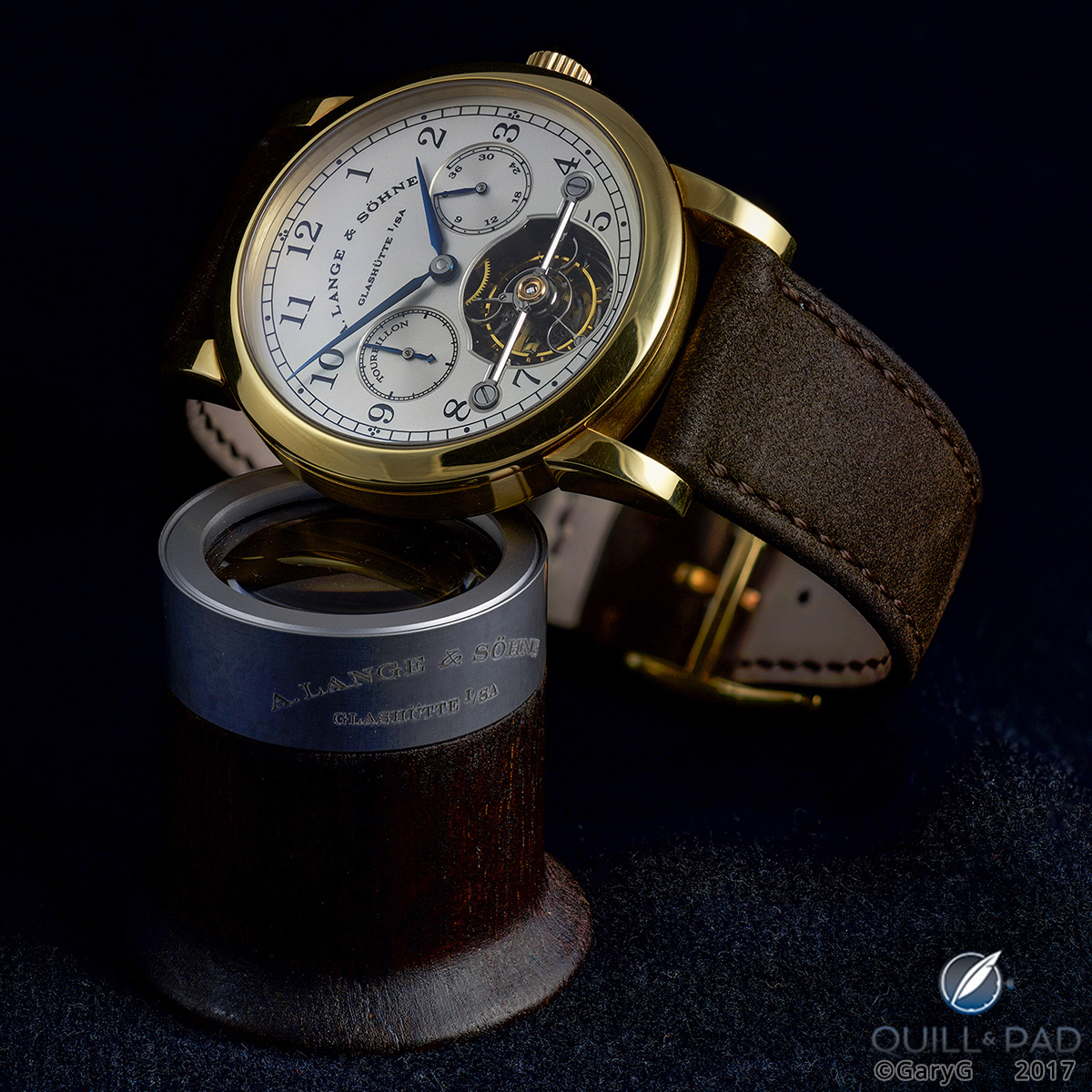
A. Lange & Söhne Pour le Mérite Tourbillon
And as GaryG mentioned in Why I Bought It: A. Lange & Söhne Pour Le Mérite Tourbillon, as seen from the 20/20 vision of hindsight, this particular timepiece also fuses the skill, creativity, and personalities of a handful of defining personages in haute horology: Blümlein, Walter Lange, Papi, and even independent fraternal watchmakers Bart and Tim Grönefeld, who worked on this project while employed by (Audemars Piguet) Renaud et Papi.
As an owner, or even as an invested observer, thoughts of what went into the making of this timepiece puts chills down the spine.
When the Tourbillon Pour le Mérite was introduced in 1994, one of the reasons it was announced in such a large limited edition – 200 pieces was a large number for the era and large for a tourbillon watch altogether – was that the timepiece was partially intended to be a symbolic thank you to the brand’s active collectors, who loyally remained among those at vintage markets scanning the booths for lost treasure, thereby keeping the memory of this great company alive even though the separation of Germany into east and west after World War II had determined a fifty-year break for A. Lange & Söhne.
Chong also tracked the Pour le Mérite models that had come up at auction since 1994: up to the publishing of his book in 2011 a total of 28 pieces had changed hands through Antiquorum, Christie’s, Sotheby’s, and Dr. Crott since 1999, with the lowest hammer price having been €90,905. Calculated at the exchange rate of the German mark to the euro that was set upon the euro’s introduction in 2003 (two to one), that still went for 40,000 marks more than its original retail price of around 140,000 marks.
The highest sale Chong tracked was, by the way, in 2007 in Switzerland with a platinum model going for €221,433.
“It cost then and still goes for prices that almost reach minute repeater status,” says Alex Ghotbi, an expert in vintage watches at Phillips.
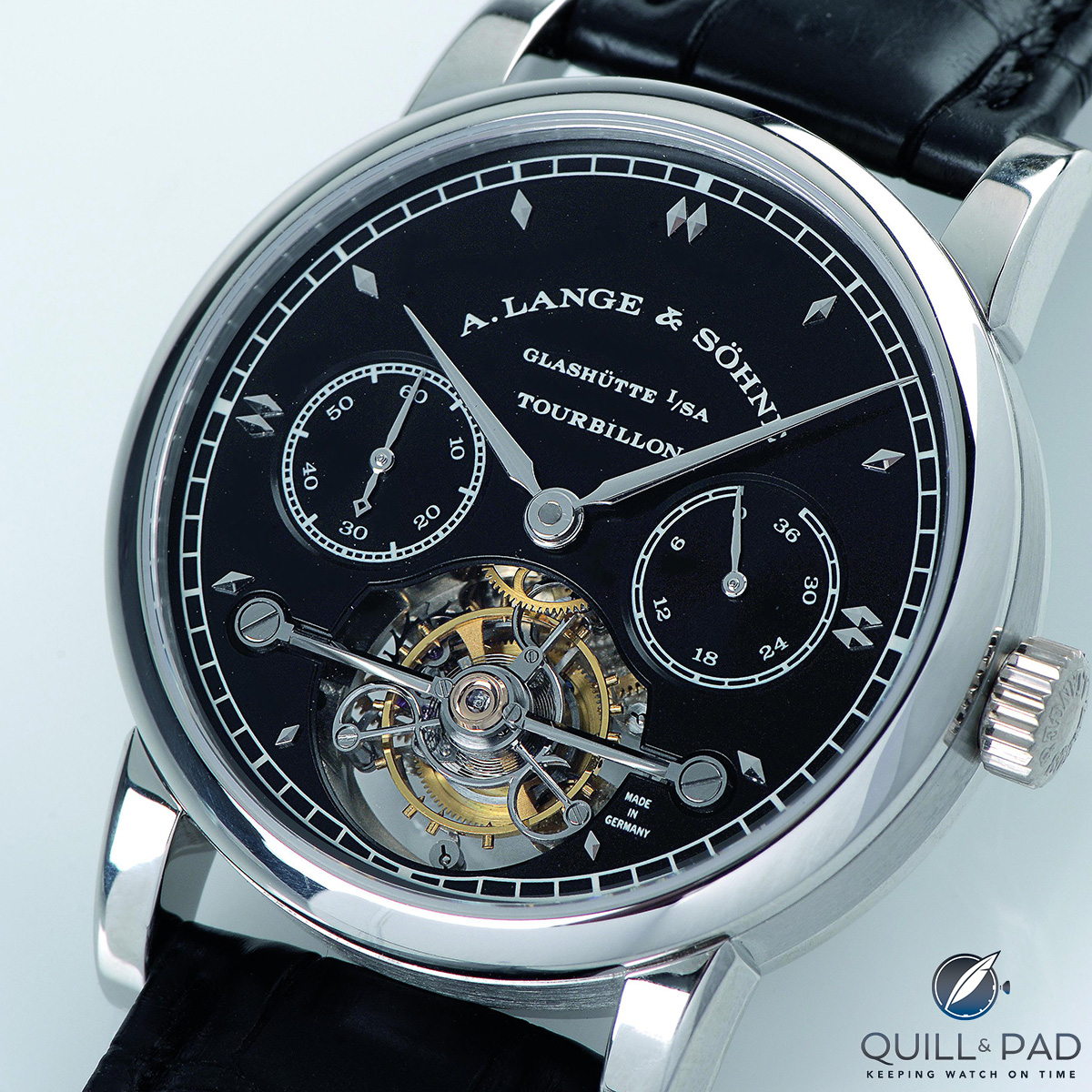
A unique piece A. Lange & Söhne Tourbillon Pour le Mérite with black dial (photo courtesy Dr. Crott Auctions)
Ghotbi picks up tracking the recent history of auction sales of the Tourbillon Pour le Mérite with some interesting stats: the platinum versions seem to be most popular at auction, and it is a unique white gold version with a black dial that holds the world record for highest price achieved for an A. Lange & Söhne watch altogether.
That particular timepiece sold by Christie’s on May 12, 2014 is described in Chong’s book and goes by the name of Reference 701.008, which was number 101/150 (case number 110351). It hammered at a price of 437,000 Swiss francs ($494,778). See the watch as photographed by Chong in Rare Watches: The A. Lange & Söhne Tourbillon Pour le Mérite Piece Unique White Gold Black Dial.
Ghotbi also notes that aside from that world record, this watch’s auction prices have remained stable over the years.
The enduring appeal of the A. Lange & Söhne Tourbillon Pour le Mérite
At the time of this writing in 2017, much more complicated wristwatches than the Tourbillon Pour le Mérite are regularly manufactured in the world of watches, 23 years after its introduction.
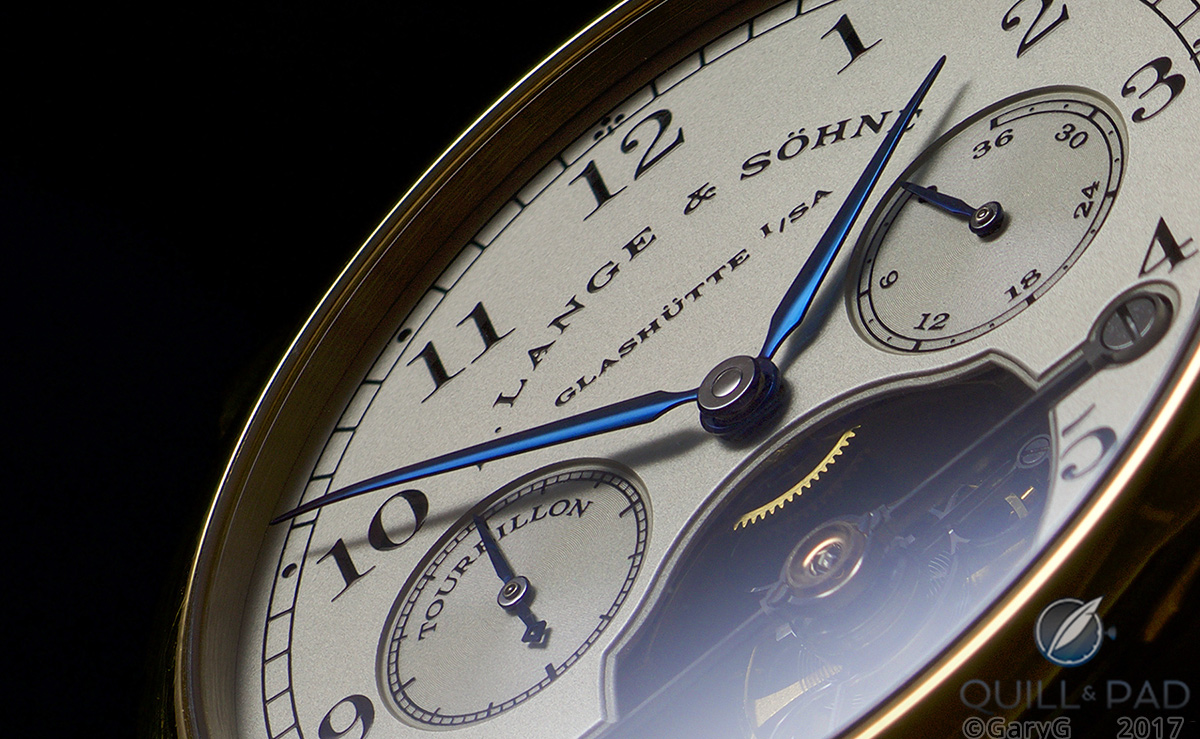
Dial detail, A. Lange & Söhne Pour le Mérite Tourbillon
So why is this particular timepiece still worth talking about?
Ghotbi has a few answers. “A. Lange & Söhne is a very interesting brand because it was a modern relaunch in 1994, but it’s also historical. It’s had a huge following among watch collectors. And the original watches launched in 1994 are, I would say, modern vintage pieces because now they’re over 20 years old.
“The one that really, really attracts collectors is the Tourbillon Pour le Mérite. Not only is it a limited edition, it’s the first of its kind with the chain and fusée. That was something nobody would have expected to see from a German brand; nobody actually believed in German watchmaking at the time. And the Pour le Mérite is one of those watches that is relevant, important, a milestone. Obviously all this adds up to making a collector piece in addition to being rare and beautiful.
“They’re sought after, they’re bought by lovers of horology, and I really think it’s one of those modern timepieces that will remain a milestone and continue being an investment. I don’t like speaking about watches as investments, but, basically, somebody who gets buyer’s remorse will get his or her money back once he sells it.
“I don’t see any other real modern Lange models except the Zeitwerk being in huge [auction] demand like the Tourbillon Pour le Mérite. This timepiece has a majesty, a collector’s appeal that is hard to replicate.
“And remember that a 38 mm watch is considered XXL in the vintage world.”
And Ghotbi mentions one more element that I had not thought of.
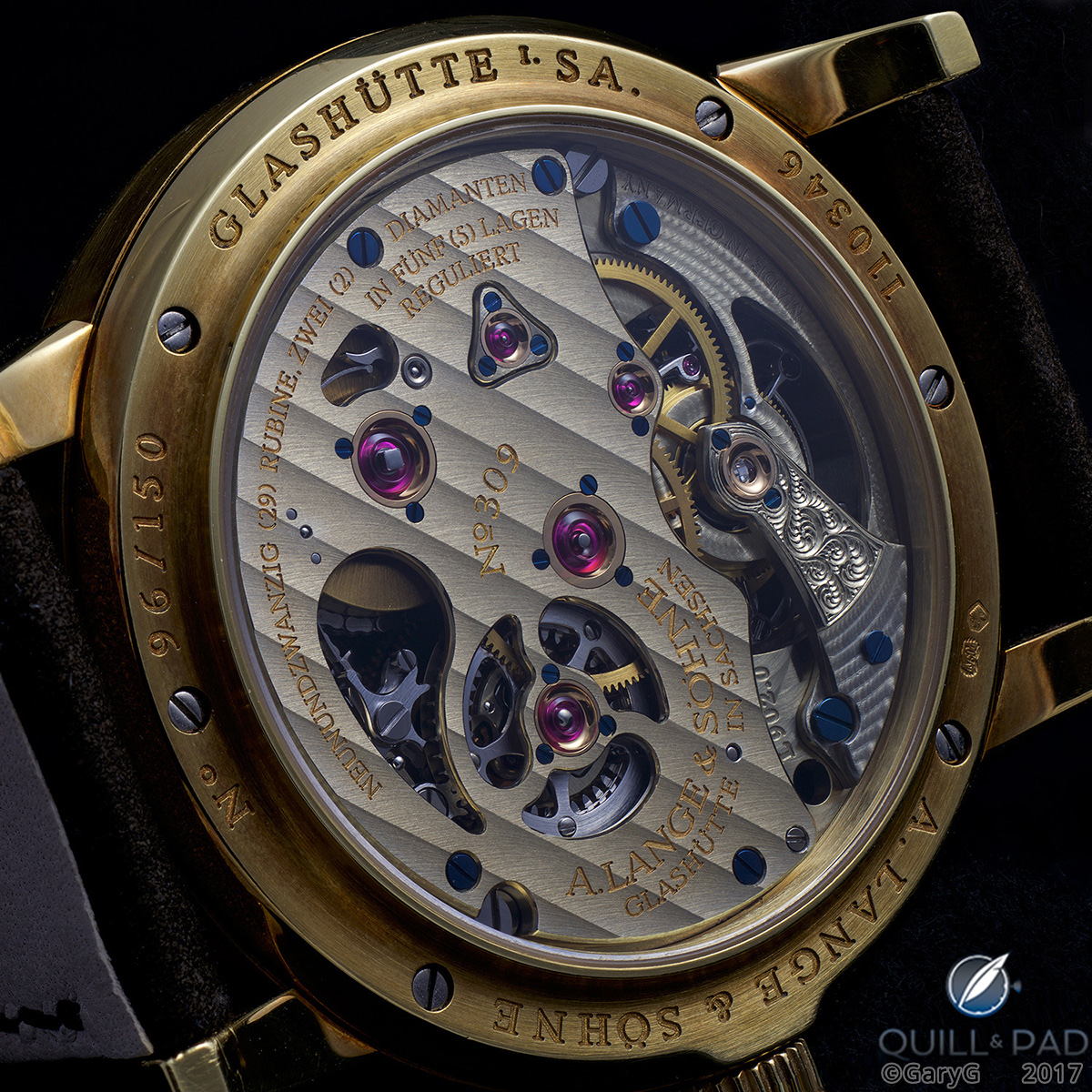
Concealing its secrets: solid three-quarter plate of the A. Lange & Söhne Pour le Mérite Tourbillon
“For me, actually, A. Lange & Söhne is responsible for the trend in which you see the watchmaking world finally making well-finished movements. Swiss movements were ugly in the 1990s, there was nothing to them. When you look at a watch from the 1980s and 1990s, and then you look at a watch from the 1950s, you might wonder what went wrong along the way.
“And then A. Lange & Söhne came along and gave a big kick in the Swiss industry’s behind, practically saying this is what we can do. And the Swiss woke up. And then, all of a sudden, in the past 10-15 years, you can see that the quality of the movement finish in a Patek Philippe, in a Vacheron Constantin, in an Audemars Piguet . . . they’re making an effort, embellishing the movements more. That’s on the record, and that’s definitely what I think.”
A fly on the wall
GaryG also rhetorically asked in Why I Bought It: A. Lange & Söhne Pour Le Mérite Tourbillon what it might have been like to have been at that introduction in 1994: “I can’t entirely imagine what it must have been like to be in the room on October 24, 1994, seeing the first four Lange watches, including the Tourbillon Pour le Mérite, unveiled,” he wrote. “But I imagine that for many who were there it was the horological equivalent of the amazed sense of revelation that members of the audience felt on the opening night of Rodgers and Hammerstein’s Oklahoma! in 1943.”
The invited guests on that historical day included a handful of German-speaking retailers and a few well-known European journalists. One of the guests was a relative newcomer to the world of watches at that time, a writer who began his career (together with me) with the launch of German watch magazine ArmbandUhren. Peter Braun is still the editor-in-chief of that magazine, and we are still close.
I asked Braun what that legendary event was like as seen from his perspective today, and his answer is perhaps less “revelatory” than GaryG might have liked, though very interesting nonetheless. “The presentation location in Dresden’s city castle was a room within a ruin that was decorated with curtains and wooden boards, you just can’t describe it any differently. The building was black from dirt, grime, and soot – the entire city, including its suburbs, was not nearly as pretty as it is today: cobblestone streets, grey buildings, lack of colorful ads, and Trabi cars . . .
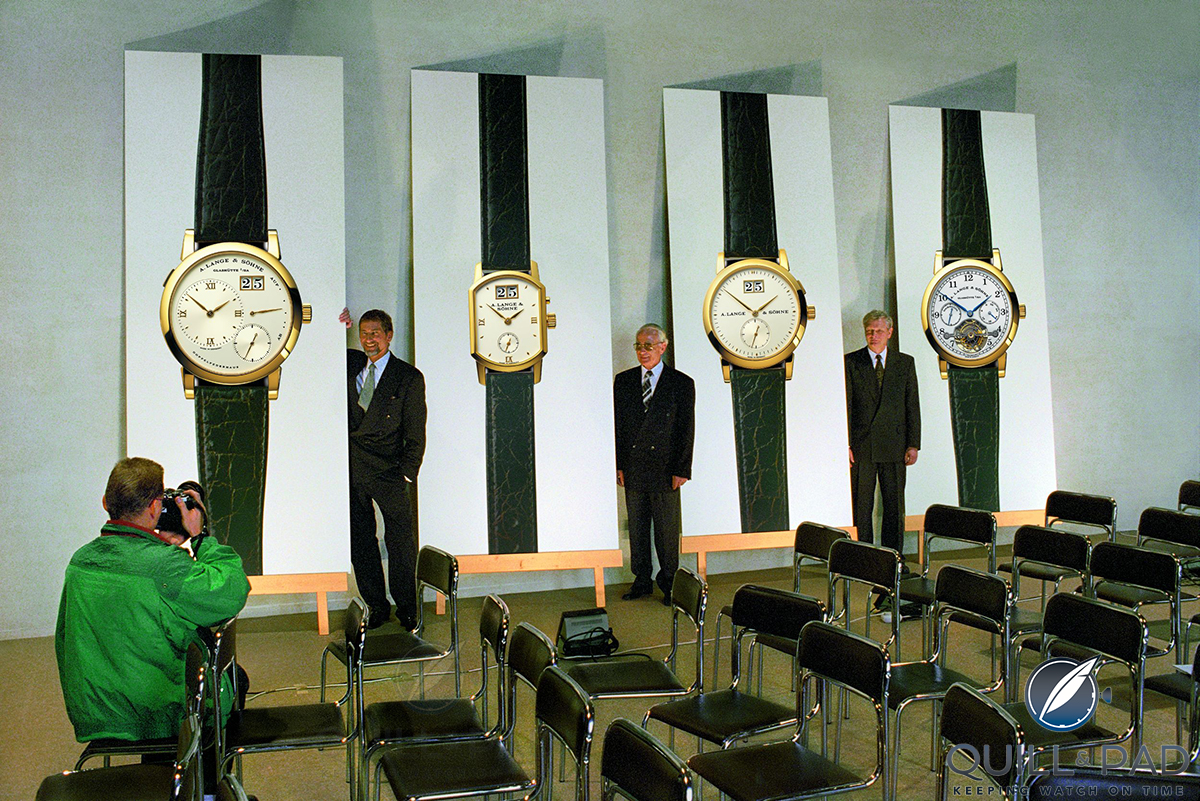
Left to right: Günter Blümlein, Walter Lange, and Hartmut Knothe under posters of the first four models launched by A.Lange & Sohne on October 24, 1994: the watches’ large dates were all set to “25” because the makers cleverly anticipated they would be shown in newspapers the following day
“The stairwell in the castle was a dirty construction site, getting to the second floor was hazardous. This is where the organizers had created a fully isolated, clean, and bright room; it was like another world. It was sparingly decorated, and the unveiling of the gigantic panels with the pictures of the four watches was a visual hammer!
“Harmut Knothe spoke in the cautious, measured tone of an elementary school teacher with a strong Saxon accent. Günter Blümlein had everything under control like a major politician. Walter Lange seemed a little lost and shy, as if he could hardly believe what was happening. It was a bright, shiny, luxurious island in the midst of a triste Mad Max-like scene: outside the world was in ruins, and here something new was beginning.
“A. Lange & Söhne was not yet a brand, only a vision, a wishful thought of German industry establishment (VDO Mannesmann), a symbol for the beginning of ‘Aufbau Ost.’
“And the dream became reality. Whoever missed their chance in 1994 hurried to make amends: just six years later, collectors paid more than the original retail price for the Tourbillon Pour le Mérite models. A. Lange & Söhne had arrived, was already winning our “Uhr des Jahres” [the first and still most important German watch prize] with regularity, and rang in the rebirth of fine German watchmaking from which the others – Glashütte Original, Nomos, Mühle, Union, Moritz Grossmann, Wempe, and Tutima – profit to this day.”
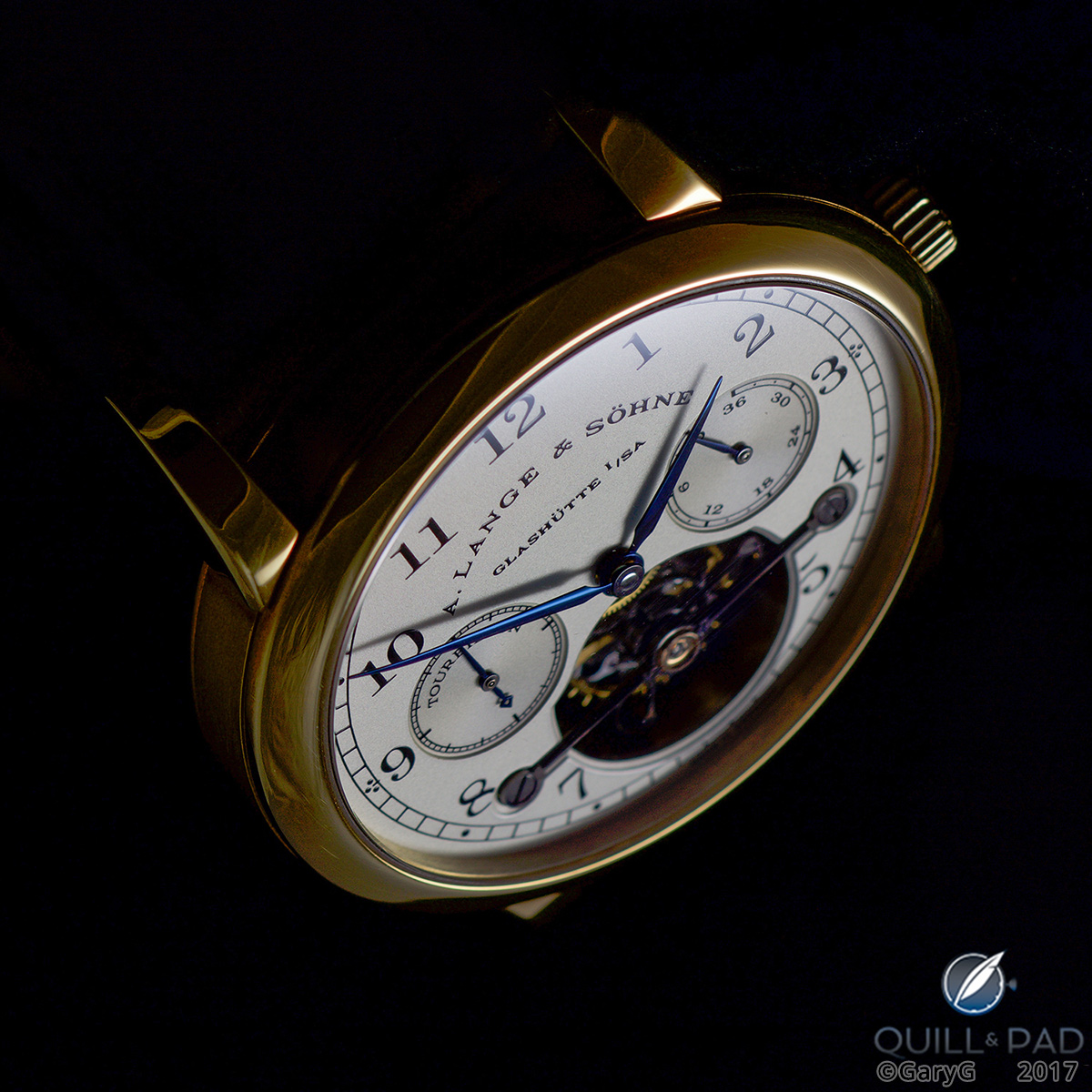
A. Lange & Söhne Tourbillon Pour le Mérite
Trendsetter
There is no doubt that A. Lange & Söhne was a major contributor to the rise of the chain and fusée’s current status in the luxury watch industry over the course of the last two decades with this timepiece in addition to that of the tourbillon.
Additionally, it fueled the desire for other high-quality manufacturers to likewise utilize their own unique forms of this vintage technology. Others who currently use the chain and fusée in wristwatches include Breguet, DeWitt, and Romain Gauthier in his acclaimed Logical One.
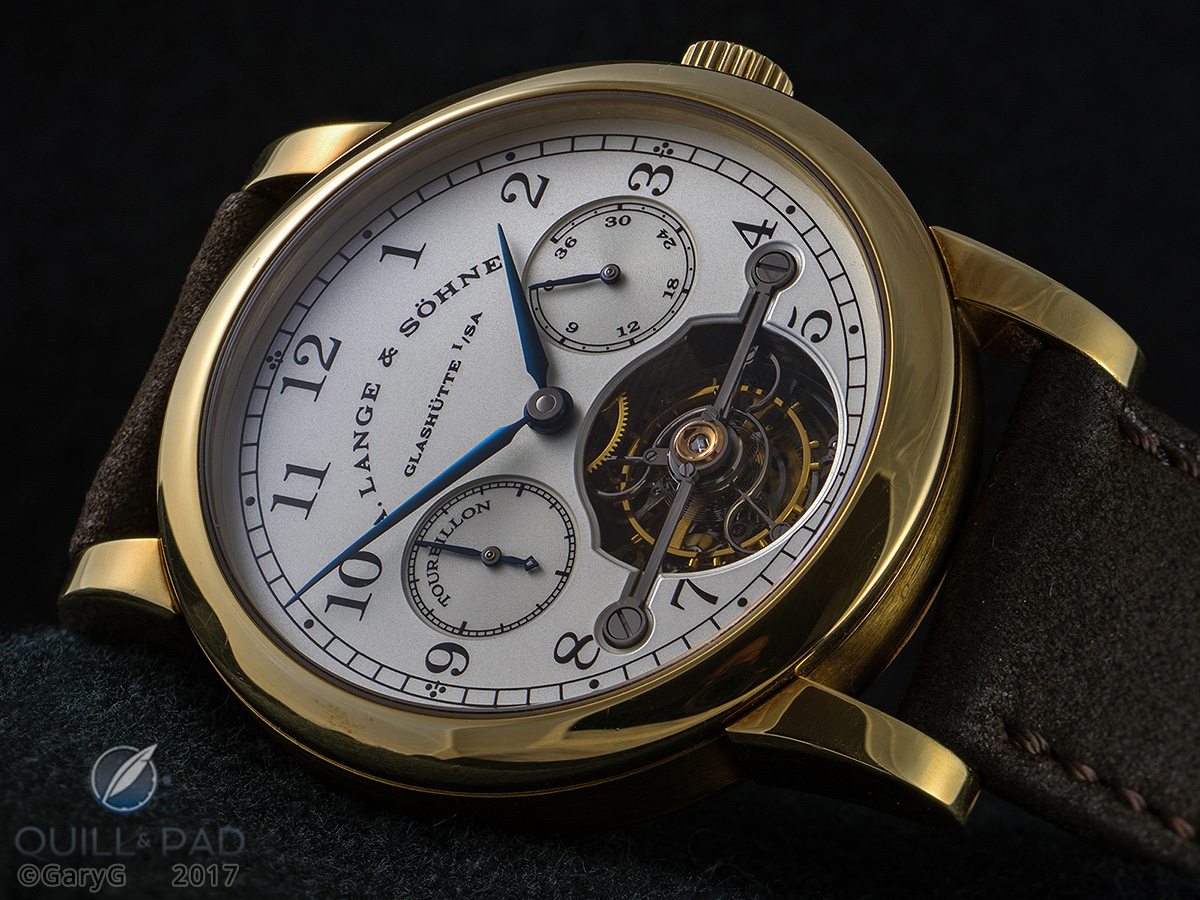
Realization of a dream: Tourbillon Pour le Mérite by A. Lange & Söhne
The A. Lange & Söhne Tourbillon Pour le Mérite was the first wristwatch in history to combine the tourbillon with the chain and fusée, one-upping what was considered the pinnacle of complicated movement making by a considerable amount.
If in 1994 a tourbillon was akin to climbing Mt. Everest, then this watch’s technology was a trip to Mars.
For more information, please visit www.alange-soehne.com/en/our-saxon-origin.
Quick Facts A. Lange & Söhne Tourbillon Pour le Mérite
Case: yellow gold (106 examples), platinum (50), pink gold (24), white gold (19), and stainless steel (1); 38.5 x 10 mm (with one smaller exception in pink gold)
Dial: silvered on yellow gold version with painted Arabic numerals
Movement: manually wound Caliber L902.0; frequency 2.5 Hz/18,000 vph; power reserve 36 hours; one-minute tourbillon; chain and fusée subassembly for constant force
Functions: hours, minutes, subsidiary seconds; power reserve indication
Limitation: 106 in yellow gold; 50 in platinum; 24 in pink gold; 19 in white gold; and 1 in stainless steel
Year of manufacture: 1994-1998
Original retail prices: 125,000 German marks (yellow gold), 140,000 German marks (platinum)
Recent auction result prices: $154,000 to $180,000 (yellow gold), $171,000 to $251,000 (pink gold), $275,000 (platinum)
